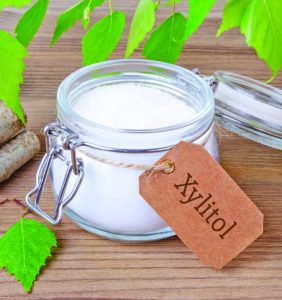Your vet has probably told you that you should stay up to speed on your dog’s (or cat’s) dental hygiene. In the same breath you’ve probably also been strictly warned not to share your toothpaste, (why anyone would think of that as a great solution, we’ll never know) and with good reason.
Aside from the fact that it veers dangerously close to Gross Beyond Belief, sharing toothpaste can potentially harm your dog. And by “potentially harm,” we mean, “almost definitely kill.”
Many if not all of of our dental hygiene products these days contain chemicals that shouldn’t be in our dogs’ systems to begin with. Fluoride is a common one that even we shouldn’t be swallowing, since it can cause an upset stomach–but we already know not to ingest it. Dogs don’t.
Xylitol is another; in the simplest terms, it’s an artificial sweetener. Its presence in dental hygiene products, though, is justified by the fact that it helps with saliva production, plaque breakdown, and cavity prevention. Sounds perfect for your dog, right? Sure. Except that it isn’t.
Most artificial sweeteners function in a similar way. They mainly substitute for sugar but for humans, artificial sweeteners often have fewer of the dangers posed by sugar. They also carry their own particular dangers, which is why they are mainly targeted at diabetics. They are dangerous for pets because pets do not know they’re not supposed to swallow the toothpaste.

Artificial sweeteners like xylitol don’t have the same consequences as sugar mostly because they kind of don’t allow themselves to be digested completely, which is why they’re also said to be scarily effective laxatives in certain amounts. Because we humans don’t digest it, it doesn’t trigger the production of insulin, and even if it did, it wouldn’t be enough for it to be dangerous, given our general size. But dogs are smaller, and xylitol in particular gets absorbed into their bloodstream very quickly–almost immediately.
Given this and the lack of sugar in their diet to begin with, the presence of an artificial sweetener will cause their bodies to initiate what we can only refer to as an insulin bomb. A dramatic drop in your dog’s blood sugar could happen in as fast as ten minutes, depending on the size of the dog. If they ingest any amount at all, you are to contact your veterinarian right away.
Overall, it’s important not to overlook the deceptively simple idea that you and your furry friend are not cut from the same cloth anatomically. Think of it this way: if you love sushi, but your best friend is deathly allergic to seafood, you wouldn’t try to shove it down their throat.
It must be said that, in general, it’s a bad idea to share anything humans consume with pets; there are chemicals our bodies are more prepared to take and digest that you should not give to an animal. You’ll hear about vegan households trying to make their cats or dogs vegan as well, which is quite frankly ridiculous, because they’re naturally carnivores.
Really, the best thing you can do to be a responsible pet owner is to respect the natural physiological workings of your pet and consult a vet (even look online!) about what you can and cannot feed them, and the appropriate amounts. Take the same care you would when looking after another person–after all, the dog’s part of the family.
This appeared in Animal Scene magazine’s September 2017 issue.






